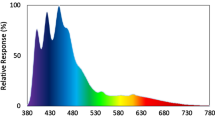Summary
A group of 20 young and another of 20 adult Lymnaea truncatula were abundantly supplied with food and kept continuously under cold conditions (5°C) in the laboratory for 3 months and the effects of low temperature on their behaviour, growth and reproduction were studied.
The results indicate that at low temperature the activity of L. truncatula was markedly reduced but complete hibernation did not occur. The snails seem to be unaffected by the low temperature itself since none (both young and adult) died during the 3 months that they were kept at 5°C.
Reduced feeding, even in the presence of abundant food, during the cold conditions caused an almost total inhibition of growth. Of even more significance was the suppression of reproduction which was connected with the metabolic rate of adult snails kept at low temperature.
Young snails seem to profit by exposure to low temperature. On the return to normal laboratory temperature (16–22°C) the young snails became very active, fed voraciously, grew rapidly, tended to live longer and produced more offspring than the controls. Low temperature, however, appears to have an adverse after-effect on the growth and reproduction of mature snails. Relatively, fewer eggs were deposited in this case.
The results indicate that under natural field conditions in England, where temperature fluctuations during the usually mild winter months are common, the greater burden of increasing the population in overwintered snails must rest on the younger members of the community.
Similar content being viewed by others
References
Boray, J. C.: Experimental fascioliasis in Australia. In: Ben Dawes, ed., Advances in Parasitology, p. 95–210. London: Academic Press (1969)
Hodasi, J. K. M.: The effects of Fasciola hepatica on Lymnaea truncatula. Parasitology 65, 359–369 (1972)
Kendall, S. B.: The life-history of Lymnaea truncatula under laboratory conditions. J. Helminth. 27, 17–28 (1953)
Mehl, S.: Die Lebensbedingungen der Leberegelschnecke (Galba truncatula Muller). Arb. Bayer. Landesamt Pfl.-Bau No. 10, Freising, München (1932)
Roberts, E. W.: Studies on the life cycle of Fasciola hepatica (Linnaeus) and of its snail host, Lymnaea (Galba) truncatula (Muller) in the field and under controlled conditions in the laboratory. Ann. trop. Med. Parasit. 44, 187–206 (1950)
Author information
Authors and Affiliations
Rights and permissions
About this article
Cite this article
Hodasi, J.K.M. The effects of low temperature on Lymnaea truncatula . Z. Parasitenk. 48, 281–286 (1976). https://doi.org/10.1007/BF00380403
Received:
Issue Date:
DOI: https://doi.org/10.1007/BF00380403




